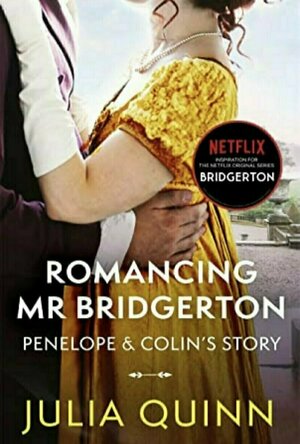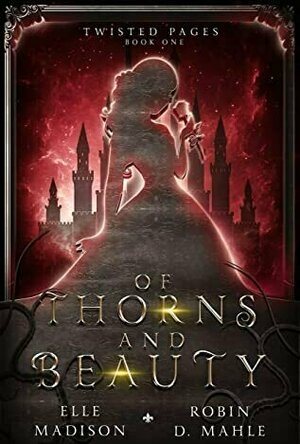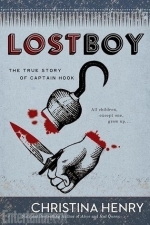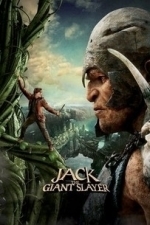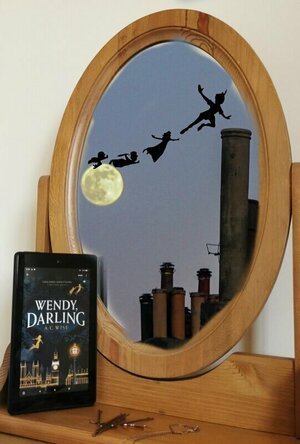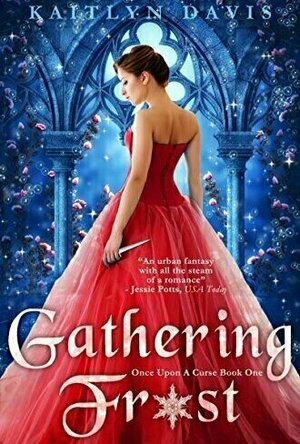Search
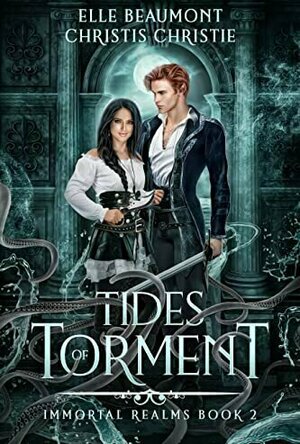
Tides of Torment (Immortal Realms #2)
Elle Beaumont and Christis Christie
Book
He’s the king of the sea. She’s a pirate captain. Together they must save the middle realm. ...
Fairytale Retelling Fantasy Romance Mythology
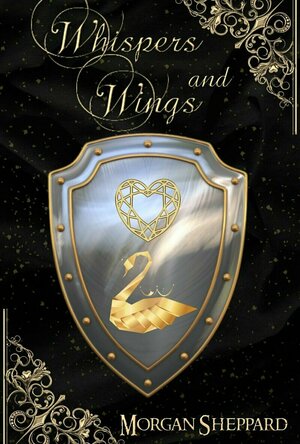
Whispers and Wings (Brodyr Alarch #6)
Book
For twenty-four years, Gerallt has borne Arianrhod’s blessing of a swan’s wing in place of his...
Fantasy Romance Welsh Celtic Mythology Fairytale Retelling Brothers Grimm
Laura Doe (1350 KP) rated Romancing Mister Bridgerton (Bridgertons, #4) in Books
Jan 6, 2022
I think that this has by far been my favourite of the Bridgerton series that I have read so far! After not enjoying An Offer From A Gentleman quite as much as the first three, I’m glad to see that Julia Quinn seemed to have gone back to her original style rather than retelling a fairytale.
We follow Penelope Featherington as she resigns herself to a life as a spinster after no proposals in all of the time that she has been out in society. I felt for Penelope that she’d not even interested one man. Despite being intelligent and witty, Penelope never was noticed at the balls and was a wallflower who only had eyes for one man, Colin Bridgerton.
I spent so much of the book wishing for Colin to notice Penelope and notice how talented she was, rather than be like the rest of the ton men. And once he finally did, it was amazing to read on as his feelings grew. Although I wasn’t too keen when he lost his temper with Penelope multiple times, but I understood the reasoning behind him doing so but just wished that he would listen to Penelope’s side a bit more.
I also love the fact that we found out the identity of Lady Whistledown in this book, but will however miss her summary of the parties and her comments about the goings on around town. I think Lady Whistledown’s Society Papers were such a fun addition to the stories and the mystery behind who she was was a puzzle that occupied me throughout the first four books of the series.
I’m hoping the next book is just as good as this one, and I am enjoying this series immensely.
We follow Penelope Featherington as she resigns herself to a life as a spinster after no proposals in all of the time that she has been out in society. I felt for Penelope that she’d not even interested one man. Despite being intelligent and witty, Penelope never was noticed at the balls and was a wallflower who only had eyes for one man, Colin Bridgerton.
I spent so much of the book wishing for Colin to notice Penelope and notice how talented she was, rather than be like the rest of the ton men. And once he finally did, it was amazing to read on as his feelings grew. Although I wasn’t too keen when he lost his temper with Penelope multiple times, but I understood the reasoning behind him doing so but just wished that he would listen to Penelope’s side a bit more.
I also love the fact that we found out the identity of Lady Whistledown in this book, but will however miss her summary of the parties and her comments about the goings on around town. I think Lady Whistledown’s Society Papers were such a fun addition to the stories and the mystery behind who she was was a puzzle that occupied me throughout the first four books of the series.
I’m hoping the next book is just as good as this one, and I am enjoying this series immensely.
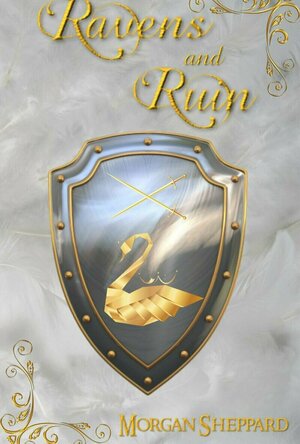
Ravens and Ruin (Brodyr Alarch #5)
Book
In a land where gods still whisper through stone and stream, one man’s forbidden gift may be the...
Fantasy Romance Welsh Mythology Brothers Grimm Fairytale Retelling
Joelene Marie (28 KP) rated The Fifth Doll in Books
Oct 1, 2018
*3.5 stars, rounded up to 4*
I originally requested this after coming across it on Netgalley during a random browse thru the sci-fi/fantasy category. The description sounded interesting so I thought I'd give it a shot. It sat on my Kindle carousel for a good while (so many books, so little time…) so it was a few days after it was released before I actually got around to starting it. I had seen The Fifth Doll mentioned in several posts and compared to Naomi Novik's Uprooted and Catherynne Valente's Deathless, two books that I love dearly. I decided to go back and check the Goodreads reviews to get an idea of the accuracy of that comparison and from there decided to read the first chapter or two to see if it hooked me like those two had. I was about 40% thru before I realized that it absolutely did have that “unputdownable” quality like the others and had to force myself to put it down and go to bed lol. After finishing it, I can say with certainty that the comparisons do indeed fit.
I have a weak spot for anything 'fairytale-esque’ and this definitely falls into that category, as it is a retelling of the origin of Russian matryoshka dolls. The mc’s name, Matrona, is a nod to this as well. This story is very well written and so imaginative. It definitely kept me guessing until close to the end when the truth about Slava, the creator of the dolls, is revealed. I liked that the Japanese nesting doll is where Slava found the inspiration to create his dolls, it's a small detail but one that ties this retelling to the real history of the matryoshka dolls.
I thought Matrona was developed pretty well but others, especially Slava, could have used a little more fleshing out. I would have also liked a little more backstory on Pavel and Oleg and the symbolism of the white horse. The writing style was solid and the pacing was just right in my opinion. The romance was subtle and didn't overshadow the main plot, which was nice for a change. The main thing I wasn't really happy with was the magic system. There's very little explanation of any of it or how it really works, only that it does. As a fan of fantasy and fairytales, I appreciate a well developed magic system as part of solid world building and that was sorely lacking here for me. Overall, it was an enjoyable read but I feel there was potential for it to be more.
**Thanks to Netgalley and the publisher for the ARC! All opinions are my own.**
I originally requested this after coming across it on Netgalley during a random browse thru the sci-fi/fantasy category. The description sounded interesting so I thought I'd give it a shot. It sat on my Kindle carousel for a good while (so many books, so little time…) so it was a few days after it was released before I actually got around to starting it. I had seen The Fifth Doll mentioned in several posts and compared to Naomi Novik's Uprooted and Catherynne Valente's Deathless, two books that I love dearly. I decided to go back and check the Goodreads reviews to get an idea of the accuracy of that comparison and from there decided to read the first chapter or two to see if it hooked me like those two had. I was about 40% thru before I realized that it absolutely did have that “unputdownable” quality like the others and had to force myself to put it down and go to bed lol. After finishing it, I can say with certainty that the comparisons do indeed fit.
I have a weak spot for anything 'fairytale-esque’ and this definitely falls into that category, as it is a retelling of the origin of Russian matryoshka dolls. The mc’s name, Matrona, is a nod to this as well. This story is very well written and so imaginative. It definitely kept me guessing until close to the end when the truth about Slava, the creator of the dolls, is revealed. I liked that the Japanese nesting doll is where Slava found the inspiration to create his dolls, it's a small detail but one that ties this retelling to the real history of the matryoshka dolls.
I thought Matrona was developed pretty well but others, especially Slava, could have used a little more fleshing out. I would have also liked a little more backstory on Pavel and Oleg and the symbolism of the white horse. The writing style was solid and the pacing was just right in my opinion. The romance was subtle and didn't overshadow the main plot, which was nice for a change. The main thing I wasn't really happy with was the magic system. There's very little explanation of any of it or how it really works, only that it does. As a fan of fantasy and fairytales, I appreciate a well developed magic system as part of solid world building and that was sorely lacking here for me. Overall, it was an enjoyable read but I feel there was potential for it to be more.
**Thanks to Netgalley and the publisher for the ARC! All opinions are my own.**
Lottie disney bookworm (1056 KP) rated Of Thorns and Beauty in Books
Dec 29, 2020
Never has a retelling been so close but so unimaginabley far away from the original fairytale. Of Thorns and Beauty is a New Adult masterpiece which will reel you in from its first pages and not let you go until its cruel cliffhanger.
A quick note that this is definitely a New Adult novel. Although not written about in detail this take includes the subjects of abuse, murder and rape as well as a bucket load of sexual tension.
This retelling of Beauty and the Beast is written solely from the perspective of our protagonist-the beauty Zaina. Forced into an arranged marriage with the renowned beast King Einar and denied any companions to accompany her, Zaina enters the "Beast's" castle entirely on her guard and unaware as to what sort of a life lays before her.
It quickly becomes apparent that Zaina's beauty has only ever caused pain and hardship for her in the past. As a result of this, she is a far cry from the bookish village girl seeking an adventure in the great wide somewhere. Zaina is fiery, sarcastic, dangerous and her prickly, defensive demeanour makes her few friends in her new home.
The use of a first person perspective with a protagonist such as Zaina really brings this novel to life. Zaina is such a damaged character and the reader is drip fed memories so partially and so slowly that we still don't know the extent of her suffering once the book has ended.
The style of writing also allows us to share Zaina's frustration at attempting to read her husband Einar's emotions: quite ironic for someone so closed off herself. The reader does not always feel empathy though: Zaina's defences are so high that she shuns any attempt at friendship; sometimes you just want to shake her!
Elements of the original beauty and the beast tale remain: there is indeed a curse, a rose and a forbidden west wing. However, these are so cleverly twisted that the reader will finish this book with an entirely different concept of who the Beast really is.
The fact that the authors themselves apologise for the cliffhanger, explaining that the characters and storyline just required more pages and more time, shows the sheer commitment to world building and character development.
Madison and Mahle introduce us to a whole new world of scenery and creatures; they pull us into the painful past of both main characters; place slimy villains in the shadows and raise our hopes of romance before throwing them off a cliff. This book is impossible to put down and I cannot wait to see what happens next.
Thank you to Booksirens for the opportunity to read a free copy of this book in exchange for an honest review.
A quick note that this is definitely a New Adult novel. Although not written about in detail this take includes the subjects of abuse, murder and rape as well as a bucket load of sexual tension.
This retelling of Beauty and the Beast is written solely from the perspective of our protagonist-the beauty Zaina. Forced into an arranged marriage with the renowned beast King Einar and denied any companions to accompany her, Zaina enters the "Beast's" castle entirely on her guard and unaware as to what sort of a life lays before her.
It quickly becomes apparent that Zaina's beauty has only ever caused pain and hardship for her in the past. As a result of this, she is a far cry from the bookish village girl seeking an adventure in the great wide somewhere. Zaina is fiery, sarcastic, dangerous and her prickly, defensive demeanour makes her few friends in her new home.
The use of a first person perspective with a protagonist such as Zaina really brings this novel to life. Zaina is such a damaged character and the reader is drip fed memories so partially and so slowly that we still don't know the extent of her suffering once the book has ended.
The style of writing also allows us to share Zaina's frustration at attempting to read her husband Einar's emotions: quite ironic for someone so closed off herself. The reader does not always feel empathy though: Zaina's defences are so high that she shuns any attempt at friendship; sometimes you just want to shake her!
Elements of the original beauty and the beast tale remain: there is indeed a curse, a rose and a forbidden west wing. However, these are so cleverly twisted that the reader will finish this book with an entirely different concept of who the Beast really is.
The fact that the authors themselves apologise for the cliffhanger, explaining that the characters and storyline just required more pages and more time, shows the sheer commitment to world building and character development.
Madison and Mahle introduce us to a whole new world of scenery and creatures; they pull us into the painful past of both main characters; place slimy villains in the shadows and raise our hopes of romance before throwing them off a cliff. This book is impossible to put down and I cannot wait to see what happens next.
Thank you to Booksirens for the opportunity to read a free copy of this book in exchange for an honest review.
Christina Haynes (148 KP) rated Lost Boy in Books
Feb 10, 2018
LOST BOY by CHRISTINA HENRY
Contains spoilers, click to show
The second star to the right and straight on till morning. That's how Peter Pan always starts. But what if there was more too it. Than just going to Neverland to never grow up?
I never really knew how I felt about Peter Pan and Captain Hook. Of course, I never wanted to grow up (I still don't) but as I got older, I soon realized that Peter Pan wasn't always such a sweet boy and Christina Henry's version of Neverland confirmed my suspicions.
Even in the book Peter Pan is still a boy who lives in Neverland with his Lost Boys. One of the Lost Boys is called Jamie, who's soon to become the infamous Captain Hook.
Peter Pan collects things like a Magpie, he collects boys. He first collected a boy called Jamie and for a long time, it was just the two of them. Before they found the twins and brought them to Neverland, they used to play games and fight pirates. They were brothers till the end. That was until Peter brought Charlie to Neverland.
That was when Jamie soon started to see that Peter wasn't a hero, wasn't a friend - he was just a Lost Boy.
Peter Pan always made you feel special, important and apart from Neverland. A place where you could be young forever and never have to worry again.
The word 'grownups’ made Peter sick and this is why I always thought that Peter Pan hated pirates, and why he always hated Hook. In fact, he hated Hook for another reason and that reason is, Captain Hook was Peter’s first Lost Boy. His first best friend. But that was until Hook grew up.
Christina Henry turns a classic story into the truth. She delves into the dark past of Peter Pan, retelling the truth behind the fairytale, the truth behind the Hook. The truth behind Neverland and what it means to be a Lost Boy.
TICK TOCK GOES THE CROC
Love, Christina ?
I never really knew how I felt about Peter Pan and Captain Hook. Of course, I never wanted to grow up (I still don't) but as I got older, I soon realized that Peter Pan wasn't always such a sweet boy and Christina Henry's version of Neverland confirmed my suspicions.
Even in the book Peter Pan is still a boy who lives in Neverland with his Lost Boys. One of the Lost Boys is called Jamie, who's soon to become the infamous Captain Hook.
Peter Pan collects things like a Magpie, he collects boys. He first collected a boy called Jamie and for a long time, it was just the two of them. Before they found the twins and brought them to Neverland, they used to play games and fight pirates. They were brothers till the end. That was until Peter brought Charlie to Neverland.
That was when Jamie soon started to see that Peter wasn't a hero, wasn't a friend - he was just a Lost Boy.
Peter Pan always made you feel special, important and apart from Neverland. A place where you could be young forever and never have to worry again.
The word 'grownups’ made Peter sick and this is why I always thought that Peter Pan hated pirates, and why he always hated Hook. In fact, he hated Hook for another reason and that reason is, Captain Hook was Peter’s first Lost Boy. His first best friend. But that was until Hook grew up.
Christina Henry turns a classic story into the truth. She delves into the dark past of Peter Pan, retelling the truth behind the fairytale, the truth behind the Hook. The truth behind Neverland and what it means to be a Lost Boy.
TICK TOCK GOES THE CROC
Love, Christina ?
Gareth von Kallenbach (980 KP) rated Jack the Giant Slayer (2013) in Movies
Aug 7, 2019
The timeless children’s tale of Jack and the Beanstalk gets a high-tech update in the new film Jack the Giant Slayer. Directed by Bryan Singer, the new version mixes in special effects with romance, action, and humor to provide a refreshing update of a fairytale that should appeal to adults and children alike. Nicholas Hoult stars as Jack, a simple farmer who’s raised by his uncle after the passing of his father. As a boy, Jack enjoyed the tales of long ago, especially those of the time when giants came down from the sky and attacked the earth before being thwarted by King Eric and his magical crown.
One day while in town to sell a cart and horse and earn much-needed funds for his uncle, Jack has a chance encounter with Princess Isabelle, (Eleanor Tomlinson), which leaves Jack’s starstruck. Unbeknownst to Jack and Isabelle, there is a dastardly plot afoot as the evil Count Roderick (Stanley Tucci), plots to rule the land once he has married Isabelle. The fact that the Princess has no interest in marrying Roderick is of little interest to the King (Ian McShane), as he is anxious to provide continuity for his kingdom following the loss of his wife. While Isabelle pleads her case with her father, Jack ends up in possession of beans which, he’s told, are magical.
Upon seeing what Jack has returned with, his uncle storms off into the night hoping to sell some of Jack’s remaining family possessions in order to make the money Jack had failed to acquire. While alone, Jack again encounters the Princess, who has decided to run away rather than be forced into a marriage she does not want. As if on cue, one of the magic beans that Jack had obtained earlier becomes wet in the rain storm and whisks the cottage and Princess into the heavens high above. The King and his men send a group of guards, under the leadership of Elmont (Ewan McGregor), to ascend the beanstalk and return the Princess. Jack and Roderick also accompany the soldiers, each with their own agenda.
Upon scaling the massive stalk, the group soon discovers that they are in the realm of giants long thought to be the stuff of legends. Complications arise which forces Jack to take command of the very perilous situation and soon finds himself battling not just to save the Princess but also for the very survival of the kingdom and surrounding world.
The film has some nice moments and while the CGI stuff may be a bit childish to some, it is important to remember that this is a fairytale and as such you are not going to see a lot of character depth and intricate plot twists. Instead, the film relies on a very likable cast made up of matinée quality villains and bad guys and some very nice visual effects to convey its simple but effective formula. Hoult follows up his leading role in “Warm Bodies” effectively and with several high-profile projects in the near future, seems poised to be a leading man to keep an eye on. The supporting cast does a very good job, especially McGregor and McShane who bring a gleeful energy to their roles as does Tucci as a villain who has everything short of the twirling mustache and black hat.
The 3-D offered some very good moments in the film and really enhanced some of the battle scenes in the film. Parents with younger children may want to note that there are some elements that may be frightening to very young children but for the most part this is a kid’s film. That being said, I was surprised how much I enjoyed the movie. It’s certainly better than I expected and was, in my opinion, the best live-action retelling of fairytale in recent memory. We did get a chance to review the film in the IMAX format which certainly allowed for the impressive visuals of the film to have an even greater impact. If you’ve ever been a fan of the story then you definitely will want to take a trip up the beanstalk for this nostalgic, yet highly enjoyable, interpretation of the beloved classic.
One day while in town to sell a cart and horse and earn much-needed funds for his uncle, Jack has a chance encounter with Princess Isabelle, (Eleanor Tomlinson), which leaves Jack’s starstruck. Unbeknownst to Jack and Isabelle, there is a dastardly plot afoot as the evil Count Roderick (Stanley Tucci), plots to rule the land once he has married Isabelle. The fact that the Princess has no interest in marrying Roderick is of little interest to the King (Ian McShane), as he is anxious to provide continuity for his kingdom following the loss of his wife. While Isabelle pleads her case with her father, Jack ends up in possession of beans which, he’s told, are magical.
Upon seeing what Jack has returned with, his uncle storms off into the night hoping to sell some of Jack’s remaining family possessions in order to make the money Jack had failed to acquire. While alone, Jack again encounters the Princess, who has decided to run away rather than be forced into a marriage she does not want. As if on cue, one of the magic beans that Jack had obtained earlier becomes wet in the rain storm and whisks the cottage and Princess into the heavens high above. The King and his men send a group of guards, under the leadership of Elmont (Ewan McGregor), to ascend the beanstalk and return the Princess. Jack and Roderick also accompany the soldiers, each with their own agenda.
Upon scaling the massive stalk, the group soon discovers that they are in the realm of giants long thought to be the stuff of legends. Complications arise which forces Jack to take command of the very perilous situation and soon finds himself battling not just to save the Princess but also for the very survival of the kingdom and surrounding world.
The film has some nice moments and while the CGI stuff may be a bit childish to some, it is important to remember that this is a fairytale and as such you are not going to see a lot of character depth and intricate plot twists. Instead, the film relies on a very likable cast made up of matinée quality villains and bad guys and some very nice visual effects to convey its simple but effective formula. Hoult follows up his leading role in “Warm Bodies” effectively and with several high-profile projects in the near future, seems poised to be a leading man to keep an eye on. The supporting cast does a very good job, especially McGregor and McShane who bring a gleeful energy to their roles as does Tucci as a villain who has everything short of the twirling mustache and black hat.
The 3-D offered some very good moments in the film and really enhanced some of the battle scenes in the film. Parents with younger children may want to note that there are some elements that may be frightening to very young children but for the most part this is a kid’s film. That being said, I was surprised how much I enjoyed the movie. It’s certainly better than I expected and was, in my opinion, the best live-action retelling of fairytale in recent memory. We did get a chance to review the film in the IMAX format which certainly allowed for the impressive visuals of the film to have an even greater impact. If you’ve ever been a fan of the story then you definitely will want to take a trip up the beanstalk for this nostalgic, yet highly enjoyable, interpretation of the beloved classic.
Lottie disney bookworm (1056 KP) rated Wendy, Darling in Books
Jun 17, 2021
Have you ever wondered what happened when Wendy, John and Michael returned from Neverland? Wendy, Darling by A. C Wise is about to reveal all, but let me warn you, it is far from a fairytale!
Life post-Neverland for the Darling children has been difficult to say the least. Upon their return Wendy was struck with a serious fever, their parents were casualties of the Titanic, Michael has recently returned from WWI with his own ghosts and John has financial struggles. However, from Wendy's perspective, these all pale in comparison: John and Michael have done the worst thing imaginable they have forgotten Neverland!
Wendy's refusal to let go of Neverland and her dogged determination to make her brothers remember their adventures causes great friction within the Darling family. Wendy finds herself labelled as a hysterical woman and is even confined to an asylum after raging at her siblings.
This is just one of the methods Wise uses to address the misogyny of the original Peter Pan story and it is a particularly harrowing one: the abuse Wendy faces at the hands of her "carers" is brutal and unforgiving in its detail. To everyone surrounding her, Neverland is Wendy's sickness, an imaginery world that she is hiding behind. However, several years after her release from St Bernadettes, Neverland still lives on in Wendy's memories and now it is catching up with her. Now Peter is flying out of her window again... with Wendy's daughter Jane in tow!
Wendy returns to a very different Neverland to that which she left. Although the island always seemed to play to Peter's every whim this time there is a dark, evil edge to it. Wise really plays on the fact that everyone idolised Peter in the original fairytale but this Peter has a barbaric, sinister personality along with a dangerous secret. Can Wendy rescue her daughter from the boy she used to worship? One thing is for sure, they're not playing a game anymore!
A. C Wise's writing almost hypnotises the reader, flitting between characters and time periods with ease without losing our interest. The undercurrent of a locked-away secret and the juxtaposition between Barrie/Disney's Neverland and Wise's makes this a real page turner.
Wendy herself is a flawed heroine but in my opinion that is the best kind. She has overcome so much loss and trauma and, although she still feels the pull of Neverland, she finds that motherhood has a much stronger claim on her heart and can provide her with so much more power than she ever imagined.
Wendy, Darling is an unflinching retelling of Peter Pan with a feminist edge. A. C Wise kidnaps and transports her readers to a dark and ominous Neverland which harbours a monstrous secret. Wendy and her daughter are on an adventure of fear, loss and grief. There is no make-believe in this fantasy land.
Thank you to Netgalley and Titan Books for the opportunity to read this e-ARC in exchange for an honest review. Wendy, Darling comes with trigger warnings for kidnap, death, trauma and abuse.
Life post-Neverland for the Darling children has been difficult to say the least. Upon their return Wendy was struck with a serious fever, their parents were casualties of the Titanic, Michael has recently returned from WWI with his own ghosts and John has financial struggles. However, from Wendy's perspective, these all pale in comparison: John and Michael have done the worst thing imaginable they have forgotten Neverland!
Wendy's refusal to let go of Neverland and her dogged determination to make her brothers remember their adventures causes great friction within the Darling family. Wendy finds herself labelled as a hysterical woman and is even confined to an asylum after raging at her siblings.
This is just one of the methods Wise uses to address the misogyny of the original Peter Pan story and it is a particularly harrowing one: the abuse Wendy faces at the hands of her "carers" is brutal and unforgiving in its detail. To everyone surrounding her, Neverland is Wendy's sickness, an imaginery world that she is hiding behind. However, several years after her release from St Bernadettes, Neverland still lives on in Wendy's memories and now it is catching up with her. Now Peter is flying out of her window again... with Wendy's daughter Jane in tow!
Wendy returns to a very different Neverland to that which she left. Although the island always seemed to play to Peter's every whim this time there is a dark, evil edge to it. Wise really plays on the fact that everyone idolised Peter in the original fairytale but this Peter has a barbaric, sinister personality along with a dangerous secret. Can Wendy rescue her daughter from the boy she used to worship? One thing is for sure, they're not playing a game anymore!
A. C Wise's writing almost hypnotises the reader, flitting between characters and time periods with ease without losing our interest. The undercurrent of a locked-away secret and the juxtaposition between Barrie/Disney's Neverland and Wise's makes this a real page turner.
Wendy herself is a flawed heroine but in my opinion that is the best kind. She has overcome so much loss and trauma and, although she still feels the pull of Neverland, she finds that motherhood has a much stronger claim on her heart and can provide her with so much more power than she ever imagined.
Wendy, Darling is an unflinching retelling of Peter Pan with a feminist edge. A. C Wise kidnaps and transports her readers to a dark and ominous Neverland which harbours a monstrous secret. Wendy and her daughter are on an adventure of fear, loss and grief. There is no make-believe in this fantasy land.
Thank you to Netgalley and Titan Books for the opportunity to read this e-ARC in exchange for an honest review. Wendy, Darling comes with trigger warnings for kidnap, death, trauma and abuse.
Sophia (Bookwyrming Thoughts) (530 KP) rated Gathering Frost (Once Upon a Curse, #1) in Books
Jan 23, 2020
<b><i>I received this book for free from Xpresso Book Tours in exchange for an honest review. This does not affect my opinion of the book or the content of my review.</i></b>
Congratulations, Kaitlyn Davis. I've found my favorite Sleeping Beauty retelling (for now) – FINALLY! (Because a lot of the other retellings I've come across have been Sleeping Beauty, and I've managed to not get along with them.)
The first book in the <i>Once Upon a Curse</i> series is <b>set up in a futuristic New York where two worlds merged as one in an earthquake</b> when Jade was younger. Years later, Jade lives in a world where a queen strips all of the inhabitants' emotions away, leaving them with no emotion. When she comes across the queen's lost son, Prince Asher, the queen sets her on a mission to be captured and trusted by the prince, eventually betraying and returning him back to the queen.
<b>There's something I really liked about <i>Gathering Frost</i> – something that Davis did here that wasn't done in other Sleeping Beauty retellings.</b> I enjoyed the futuristic world Davis creates – two worlds, one of them believed to be parallel to Earth, being merged together and a queen who takes away all emotions from her people, along with the ability to control them. Somehow, throughout all of that, <b>Davis weaves in a bit of Sleeping Beauty and make her own fairytale world as well</b> – I really liked the addition of Jade coming across the original story while staying in the rebel camp.
There's also <b>something about Davis' writing style that I really enjoyed</b>, despite the fact there were a few moments where I started questioning the grammar, or there were commas where there really shouldn't have been any commas, or there were commas thrown in when the sentence would have worked so much better as two sentences. There were some parts that were <b>just written beautifully and flowed together extremely well</b> (read: the beauty of parallel structure).
I honestly can't say too much about the characters, particularly in Jade's case. Since her emotions have been taken away by the queen, <b>it was only natural for Jade to be depicted as a cold, detached, statuesque character and focus mainly on her surroundings.</b> As Jade spends more time in the rebel camp, though, <b>she slowly starts to develop emotions and feelings, and Jade's focus seems to balance out a little with her surroundings, her past, and her newly developed emotions.</b>
With a hint on what the sequel will probably be about, Davis doesn't actually leave us on a major cliffhanger. Instead, she seems to be conveying that <b>Jade's and Asher's story definitely won't be ending with <i>Gathering Frost</i></b> – they're more than likely to appear in the second book, and I can't wait to see what Davis comes up with for her retelling of <i>Beauty and the Beast</i>.
<a href="https://bookwyrmingthoughts.com/review-gathering-frost-by-kaitlyn-davis/"; target="_blank">This review was originally posted on Bookwyrming Thoughts</a>
Congratulations, Kaitlyn Davis. I've found my favorite Sleeping Beauty retelling (for now) – FINALLY! (Because a lot of the other retellings I've come across have been Sleeping Beauty, and I've managed to not get along with them.)
The first book in the <i>Once Upon a Curse</i> series is <b>set up in a futuristic New York where two worlds merged as one in an earthquake</b> when Jade was younger. Years later, Jade lives in a world where a queen strips all of the inhabitants' emotions away, leaving them with no emotion. When she comes across the queen's lost son, Prince Asher, the queen sets her on a mission to be captured and trusted by the prince, eventually betraying and returning him back to the queen.
<b>There's something I really liked about <i>Gathering Frost</i> – something that Davis did here that wasn't done in other Sleeping Beauty retellings.</b> I enjoyed the futuristic world Davis creates – two worlds, one of them believed to be parallel to Earth, being merged together and a queen who takes away all emotions from her people, along with the ability to control them. Somehow, throughout all of that, <b>Davis weaves in a bit of Sleeping Beauty and make her own fairytale world as well</b> – I really liked the addition of Jade coming across the original story while staying in the rebel camp.
There's also <b>something about Davis' writing style that I really enjoyed</b>, despite the fact there were a few moments where I started questioning the grammar, or there were commas where there really shouldn't have been any commas, or there were commas thrown in when the sentence would have worked so much better as two sentences. There were some parts that were <b>just written beautifully and flowed together extremely well</b> (read: the beauty of parallel structure).
I honestly can't say too much about the characters, particularly in Jade's case. Since her emotions have been taken away by the queen, <b>it was only natural for Jade to be depicted as a cold, detached, statuesque character and focus mainly on her surroundings.</b> As Jade spends more time in the rebel camp, though, <b>she slowly starts to develop emotions and feelings, and Jade's focus seems to balance out a little with her surroundings, her past, and her newly developed emotions.</b>
With a hint on what the sequel will probably be about, Davis doesn't actually leave us on a major cliffhanger. Instead, she seems to be conveying that <b>Jade's and Asher's story definitely won't be ending with <i>Gathering Frost</i></b> – they're more than likely to appear in the second book, and I can't wait to see what Davis comes up with for her retelling of <i>Beauty and the Beast</i>.
<a href="https://bookwyrmingthoughts.com/review-gathering-frost-by-kaitlyn-davis/"; target="_blank">This review was originally posted on Bookwyrming Thoughts</a>
